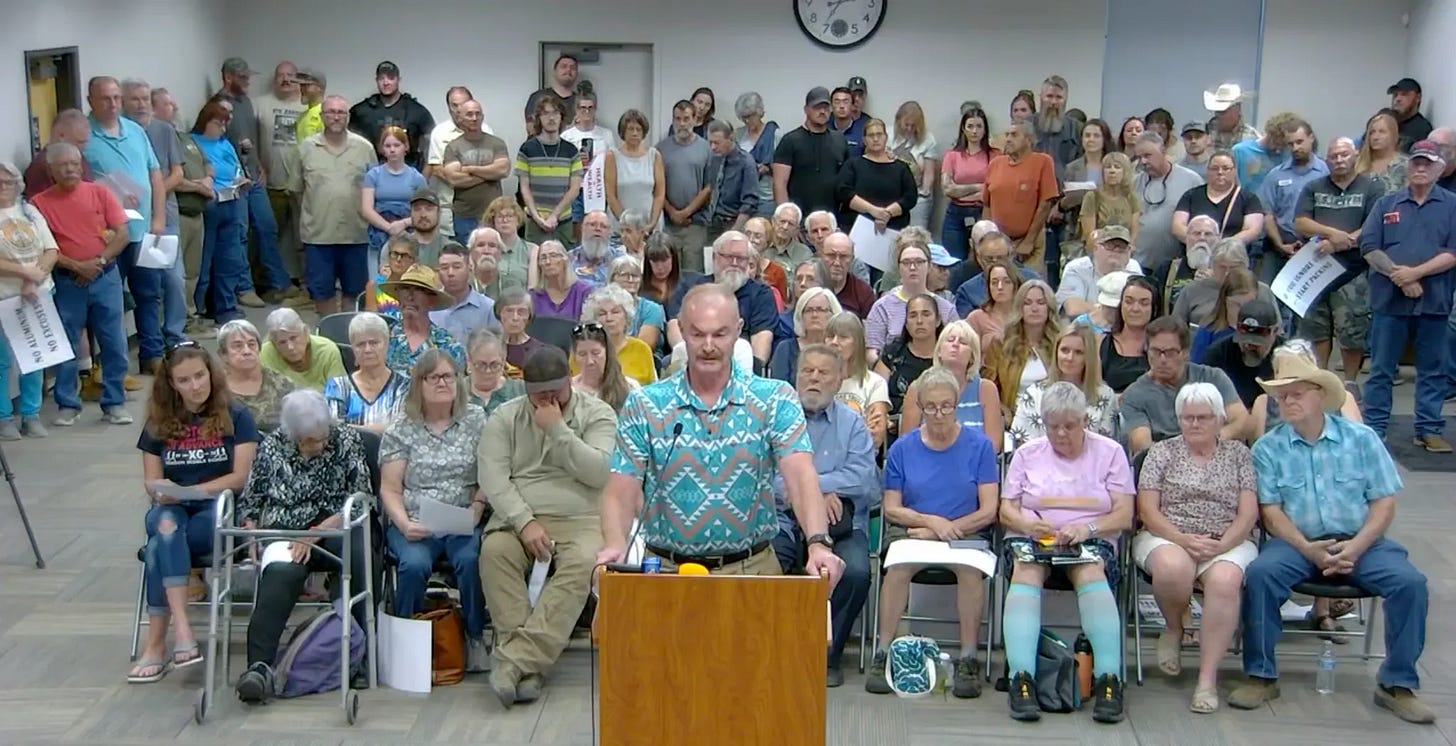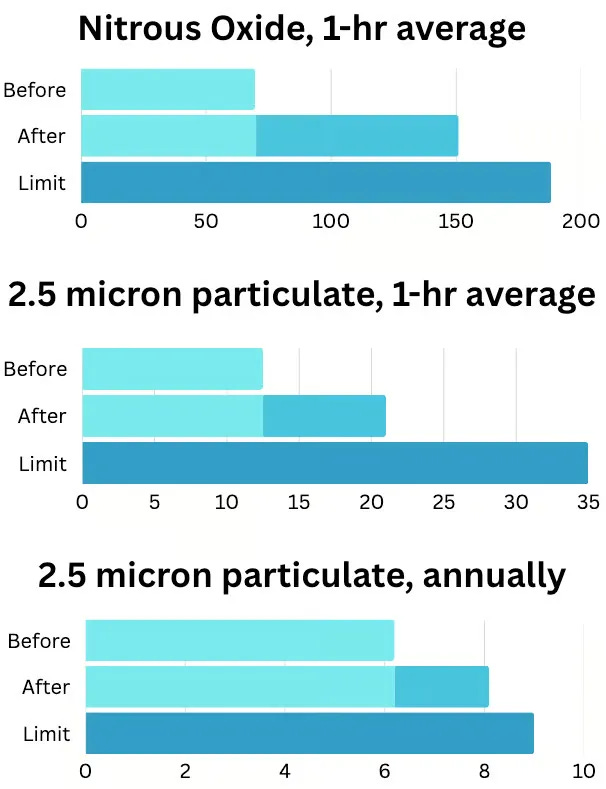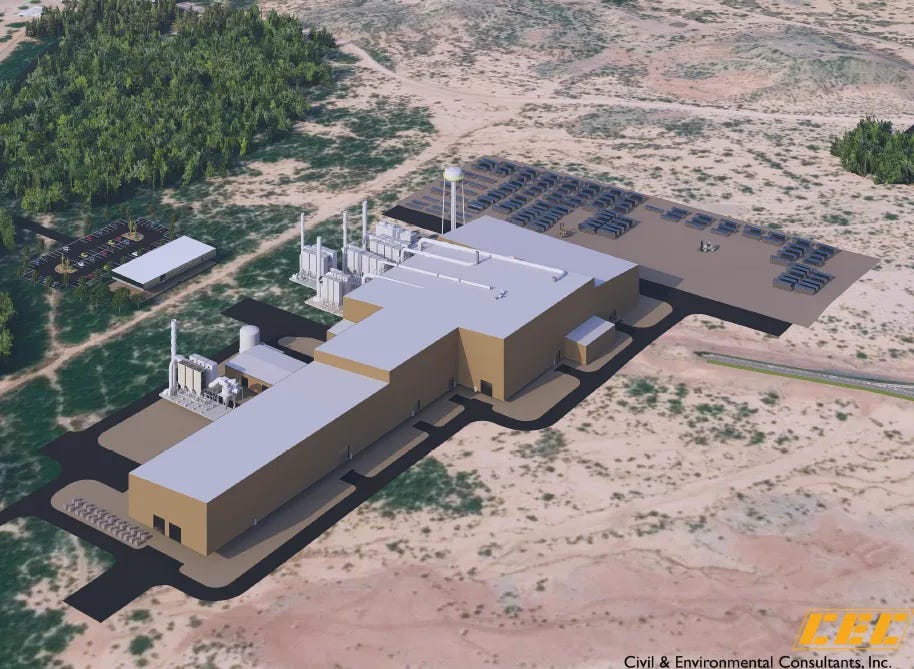Helter Smelter
Benson residents are kicking up dust in an effort kick out dust.
The typically sleepy City of Benson in Cochise County has become energized over a controversial industrial development proposal.
Aluminum Dynamics Incorporated (ADI) would like to erect an 88-foot-tall aluminum processing plant, and the city quietly gave the company a green light before city residents found out and mounted a challenge.
Since I first broke the story in my local newsletter, a non-profit has been established and filed a lawsuit against the City of Benson, a PAC has formed and started a recall petition of the mayor and city council members, protests have been staged, and next month, Attorney General Kris Mayes will hold a town hall to address residents’ concerns about the project.
It’s a lot of drama in a small town.
But what are residents concerned about at the end of the day? Water use, air pollution, the company’s history of non-compliance with regulations and a local government that they don’t believe has their back.
Something in the air
The facility proposed by ADI is called a “secondary smelter,” or as ADI likes to insist, a “remelter — not a smelter!”
The plant would melt down aluminum scrap and produce ingots to be shipped to their under-construction facility in Mississippi. Even though the plant wouldn’t be smelting ore, secondary smelting still produces toxic emissions and requires an air quality permit from the Arizona Department of Environmental Quality (ADEQ). In this case, the company estimates it would produce just over 100 tons of airborne pollutants annually.
The company also estimates that its emissions won’t exceed limits set by the Environmental Protection Agency — but only barely. Below, I’ve graphed the anticipated pollutant levels, before and after the facility produces emissions, which come closest to exceeding regulatory limits, per the company’s permit application.
These close-call estimates worry residents who point to the company’s past failures to comply with regulatory standards.
In 2007, ADI’s parent company, Steel Dynamics (SDI), agreed to pay $263,000 for emission prevention equipment and a $13,540 penalty after violating EPA clean air standards at its facility in Butler, Indiana.
In 2021, the company paid a $475,000 penalty when the same facility was again found failing to comply with air pollution limits.
In 2023, it was ordered to pay $24,300 for exceeding carbon monoxide emissions limits at its facility in Columbus, Mississippi, and $7,800 for producing hazardous waste at its facility in Pittsboro, Indiana.
SDI subsidiary company OmniSource paid $163,900 in 2010 for exceeding dust emissions at three of its scrap metal processing plants in Ohio.
Benson resident Brendan Tammetta, a member of the Health Over Wealth Benson nonprofit that is suing the city, also expressed a lack of confidence in ADI’s self-reported emission estimates.
“After speaking directly with ADEQ and the data scientists behind the air modeling, I left with more questions than confidence,” Tammetta said. “I’m a test engineer who works closely with data scientists. So I know a thing or two when a scientific model relies too heavily on theory instead of hard data. … There were no air sensors used here, no present day emissions data from similar facilities, like IMSAMET, and no on-site sampling in Benson. This permit is being built on a model and paperwork, not reality. … Benson deserves real data, local testing, independent review, and transparency before a decision like this is finalized.”

Of particular concern for some residents are the effects of pollution on a nursing home across the street from the proposed plant, public schools within a mile of the location, the nearby San Pedro River and local agriculture.
Benson’s water battles
Benson’s groundwater situation in the Upper San Pedro Basin isn’t as dire as the neighboring Willcox and Douglas Basins, but it faces legitimate problems.
Benson, Sierra Vista, Bisbee, and other towns all depend on the basin’s groundwater supplies, with water tables declining more than two feet per year in some areas.
The San Pedro River’s health also depends on groundwater levels. The federal government gave it a protected status in the 1980s, and activists finally got an Arizona court in 2023 to quantify the water needed to maintain the health of the river.
Earlier this month, it was reported that one of the court-ordered monitoring wells for the river had gone dry, while eight others show water levels below the court-mandated levels.
Aluminum Dynamics’ proposed aluminum plant would be allowed to use up to 500,000 gallons of water a day, or enough water for the domestic needs of 3,425 residents. This would be roughly half of what the nearby military base Fort Huachuca uses, which is currently the largest single water user in the area.
Some residents are concerned that the aluminum plant would compete with Fort Huachuca’s water needs, possibly exacerbating demands for the fort’s closure from environmentalists, and threatening the economic power the fort generates. Others are simply concerned with the net addition to demands on a limited and declining groundwater supply.
You know what else is limited and declining? Local news. But you can give it a boost just by clicking this button.
A tall tale
Benson City Manager Greg Volker, who is also the city’s police chief, has been a booster of the proposed aluminum plant, saying that the industrial growth will support the community, and that it’s not the city’s place to interfere with ADI’s development.
“The city’s stance is simple. The land had been zoned for heavy industry since 1962, reaffirmed in 1991 and 1994 and recently approved by the general development plan. By right, the business can build in Benson and we support upholding the law,” he told the Republic in August.
There is one big rub here. As mentioned, the proposed plant would be 88 feet tall, with smoke towers up to 100 feet tall, which requires a variance from the standard 30-foot limit on building heights in the city.
The city’s Planning and Zoning Commission signed off on the variance last October after receiving only one letter from the public in protest — though the commission didn’t have to approve it.
Volker also downplayed concerns about the proposed facility’s allowed water use, saying it was equivalent to only 40 homes’ water use. By that math, the average home would use 12,500 gallons of water a day, about 3,100% greater than actual household water use.
The local paper takes sides
Benson’s local print news coverage is supplied by the Sierra Vista-based Herald/Review, whose first coverage of the story, eight months after the height variance was granted, featured the headline “Outcry over Benson aluminum recycling plant may be too late. The story highlighted that the plant would create new jobs in the face of recent reports of climbing unemployment for the area.
Five weeks later, Herald/Review managing editor Matt Hickman published an opinion piece which criticized opponents of the project as “a bunch of tree-hugging granola-eaters,” NIMBYs who “should probably be flattered” that they’ve been “asked to the prom” by Aluminum Dynamics.
Hickman wrote that Benson is “the ideal place for industrial development in Cochise County,” agreeing with recent comments from Republican County Supervisor Frank Antenori.
What’s next?
Health Over Wealth Benson’s lawsuit claims the variance should have been made by the city’s Board of Adjustment, not P&Z. They also argue that ADI’s application for a Conditional Use Permit — the vehicle by which the height variance was granted by P&Z — is invalid because city regulations require applications to be submitted by property owners, and ADI is only a lessee of the property, not the owner.
Meanwhile, ADI has an open lawsuit against the Town of Gila Bend after its Town Council failed to deliver a two-thirds vote approving a rezoning for a similar proposed aluminum plant that ADI had been developing. That threat of lawsuits might deter the City of Benson from issuing any reversals of its decision to grant the height variance.
The Committee For A Better Benson PAC is continuing to collect signatures for its recall of Benson Mayor Joe Konrad and the entire City Council.
AG Mayes’ town hall in Benson takes place on October 9 at 5:30 pm.






Perhaps, I should weigh in on the Benson air pollution data as I was the Director of the Lung Injury Laboratory at the University of Arizona College of Medicine for over 20 years and co-edited the book entitled, Environmental Tobacco Smoke, which was the first book published on the matter. I demonstrated in an animal model that just five puffs of cigarette smoke exposure caused lung injury. Imagine breathing 24-7 the equivalent of cigarette smoke particulates from this aluminum smelting plant! Additionally, aluminum also acts as an estrogen mimicry agent! Do the citizens of Benson want their young daughters or granddaughters to be exposed to a pollutant that could alter their estrogen metabolism and body growth?
I’m a paid subscriber and fully support your coverage all the way to the border. Shine light on these proposals, processes, and decisions! Residents must be able keep track of decisions being made that will affect their health and the viability of their water supply.
Why this operation, and why here? Because it’s cheap and easy? And they were chased out of Mississippi? That’s a low bar.